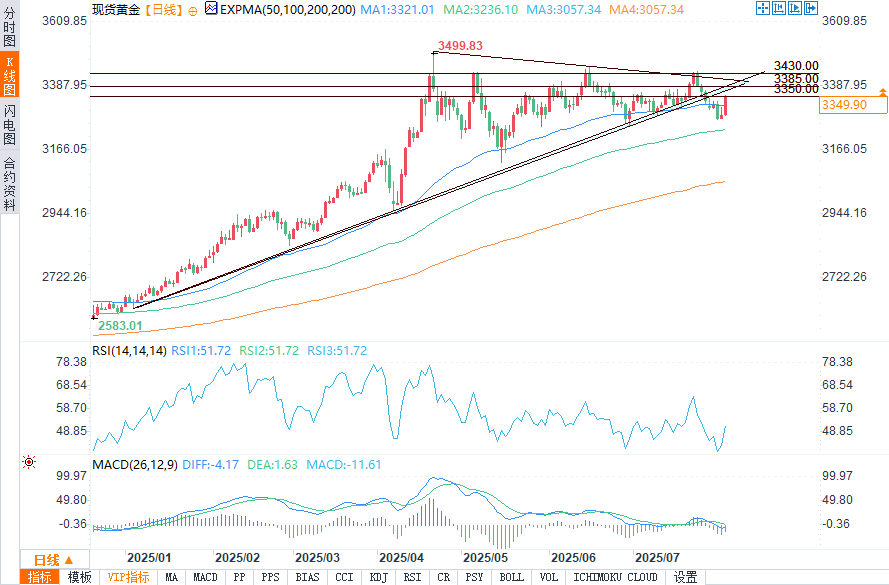US ISM Manufacturing Purchasing Managers' Index fell to 48, gold tested $3350
2025-08-01 23:29:44

The Institute for Supply Management (ISM) announced on Tuesday that its manufacturing purchasing managers' index (PMI) fell to 48 in July, down from 49 in June. This overall data was worse than expected, as the market had generally expected the index to rise to 49.5.
Susan Spence, MBA, chair of the Institute for Supply Management's Manufacturing Business Survey Committee, said the disappointing data suggests that overall economic activity is weakening.
"Looking at the manufacturing economy, 79% of the sector's GDP contracted in July, up from 46% in June," Spence said. "Notably, 31% of GDP is contracting significantly (with the composite PMI falling to 45% or lower), up from 25% in June. The proportion of manufacturing GDP with a PMI at or below 45% is a good indicator of overall weakness in the manufacturing sector. Of the six major manufacturing sectors, none grew in July, compared to four that grew in June."
The gold market did not react much immediately to the manufacturing data as investors were still digesting the latest U.S. labor market data. However, some analysts noted that gold remains an attractive safe-haven asset as the manufacturing sector continues to lose momentum.

(Source of spot gold daily chart: Yihuitong)
Aaron Hill, senior market analyst at FP Markets, said: "The weaker data has heightened concerns about an economic slowdown, further weighing on the dollar as it shows continued weakness in a key driver of the U.S. economy. For gold, the poor purchasing managers' index has increased its appeal, and as uncertainty grows, investors flock to safe-haven assets, which may drive up demand for gold."
At 23:28 Beijing time, spot gold was quoted at US$3,349.10 per ounce, up 1.80%.
- Risk Warning and Disclaimer
- The market involves risk, and trading may not be suitable for all investors. This article is for reference only and does not constitute personal investment advice, nor does it take into account certain users’ specific investment objectives, financial situation, or other needs. Any investment decisions made based on this information are at your own risk.





















